Unseen Photo Fair 2014: Obscuring The Human Form
Provocative images commanding a closer look, culled from Amsterdam’s expertly curated annual showcase
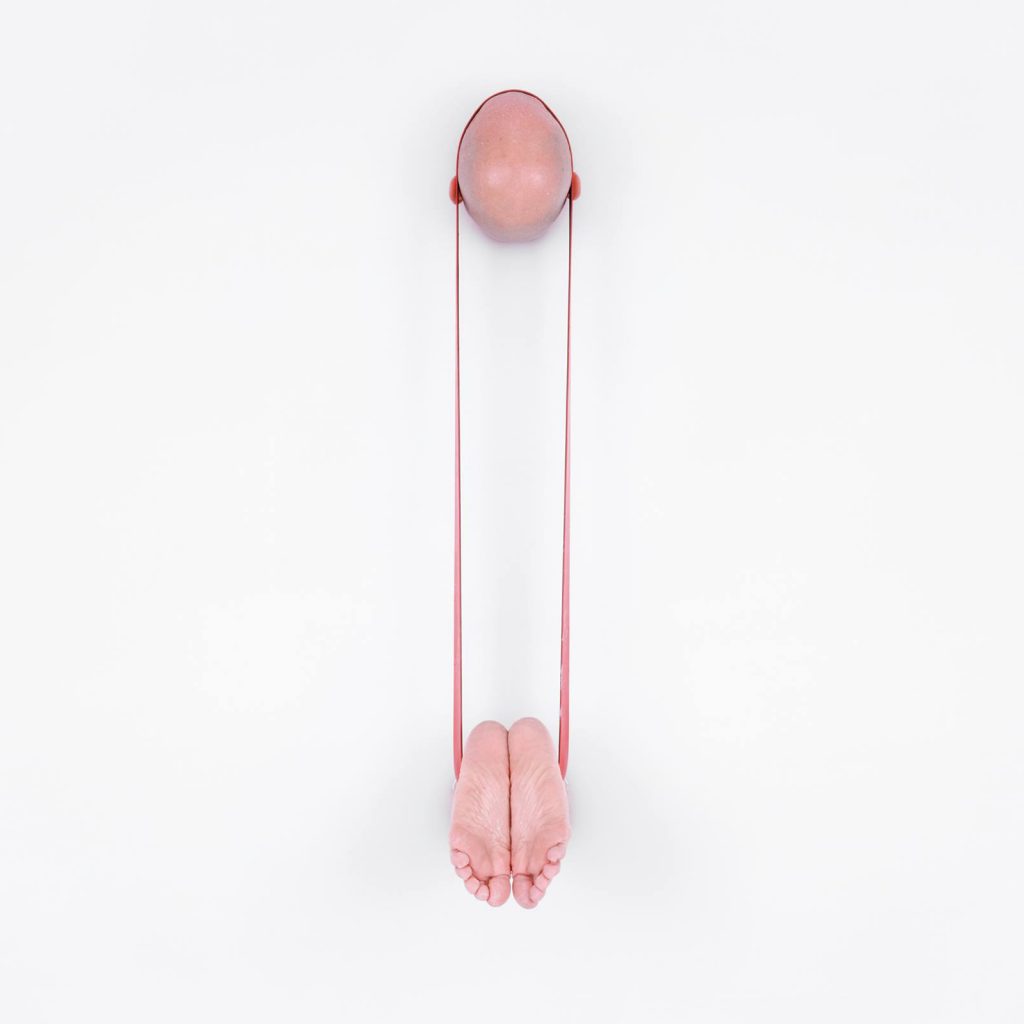
Now in its third year, Amsterdam’s Unseen Photo Fair is a veritable artistic force. Housed in a former gasworks, the impressive selection shows that while the world may be drowning in images, when expertly curated, it’s still an enlightening medium that can teach, surprise and spark intense controversy. Below is a look at some of the more provocative images we came across, which examine the human form through purposeful obscurity and clever composition.

Gábor Gerhes
Born in 1962, Gábor Gerhes has been a prominent figure among Hungarian photography for several decades. Carefully composed and utterly provocative, his conceptual black-and-white works on view at Unseen were from his award-winning series “Neue Ordnung” (which translates to “New Order” in English) which demonstrate hatred “as the true ancient passion of humanity.” The portraits of people cloaked in various ways are meant to evoke familiar and historic images of people with or exerting power, while simultaneously eluding to the fact that “dominating, colonizing and enslaving” is a latent human attribute much larger than any government or individual country. Gerhes is represented by Budapest’s acb Gallery

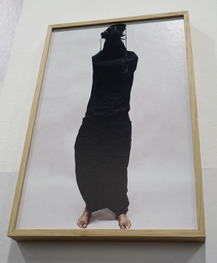
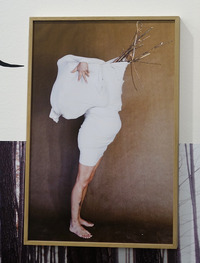
Augustin Rebetez
Swiss artist Augustin Rebetez creates alternate universes that shroud both their true location and the people inhabiting them (for his latest work he shot in Seoul, Japan, Australia, and Stockholm). The young Buster Keaton-inspired multidisciplinary photographer—born in 1986—works with circus artists and contortionists who can achieve wildly impossible poses, which only further befuddle the eye and add depth to his bizarre fictional tales. Rebetez’s photos, video and drawings were on view with Galerie Nicola von Senger.
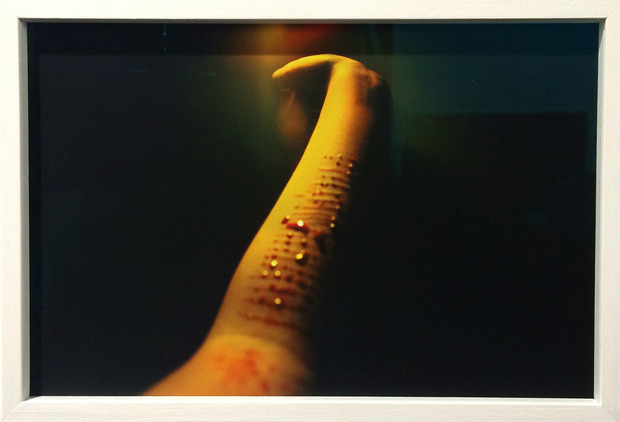
Zhe Chen
In surprising works that thoroughly explore the definition of art, Chinese photographer Zhe Chen (born in 1989) examines her own illness with self-harm. To the quick-judging viewer, Chen’s confessional photos may seem to promote such acts of despair, but those able to give them more serious thought will recognize her images as a meditation on her own reality, supported by a studious approach to portraiture and the tool she uses to bravely express herself in a country that regularly suppresses subversive art. While her series “The Bearable” is both astonishing and heartbreaking, it succeeds in investigating “the truth of the human condition,” and should be considered for its professional and honest look at the complex disorder. Photos from the series were on view at Antwerp’s Stieglitz19 gallery.
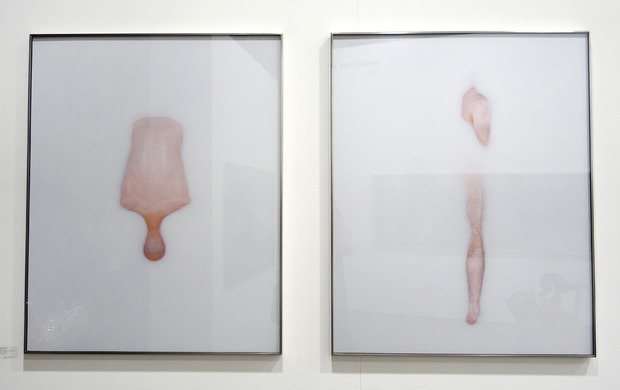
Tilman Peschel
Bathing his subjects in milky white waters, German photographer Tilman Peschel reduces the human body to basic silhouettes that at first blush seem like unrecognizable, puzzle piece-like forms that float within the foreground. The 38-year-old artist balances naturally occurring beauty with purposely obtuse compositions as a way of challenging the camera’s technical ability to capture reality. While independent in his execution, Peschel’s penchant for using the human form as a foundation for his work can be linked to his former professor—the revered artist Jürgen Klauke, who used his own body to explore themes of gender and sexuality. Peschel’s work was on view through Berlin-based Aando Fine Art.
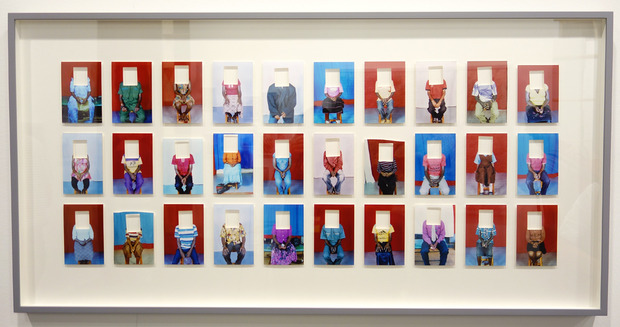
Martina Bacigalupo
Italian photojournalist Martina Bacigalupo didn’t actually shoot the portraits in her series “Gulu Real Art Studio”—instead, they’re remnants she picked up at a Northern Ugandan photo studio that were taken by its owner Obal Denis. Format-wise for Denis, taking an entire portrait and cutting out the head was cheaper to produce than the sitter’s desired passport photo. East Africa-based Bacigalupo (born in 1978) came across the discarded images on assignment with Human Rights Watch, and recognized the narrative left in the remaining headless portraits. Together, they offer a typological representation of the nation while allowing the viewer to draw their own perceptions. The selection of 6×4-inch prints were on view with London’s Camilla Grimaldi gallery.


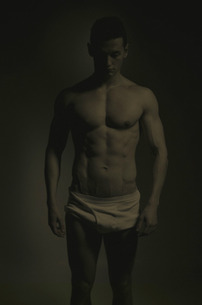
Matthew Murray
British photographer Matthew Murray‘s 2014 “Stripper” series stems from a chance encounter, he explained recently in Port Magazine. He happened to catch the UK Pleasure Boys practicing their dance moves and seized the opportunity to take their individual portraits. By masking their physiques through a dark filter, Murray seemingly plays with the definition of their work—to maintain a seductive quality while baring it all. This also forces the viewer to stop for an in-depth stare to fully examine the details, only exacerbating the awkwardness the portraits innately project. “Stripper” was on view through Amsterdam’s own Gallery Vassie.
Images by Karen Day; Matthew Murray’s “Stripper” photos courtesy of the artist












